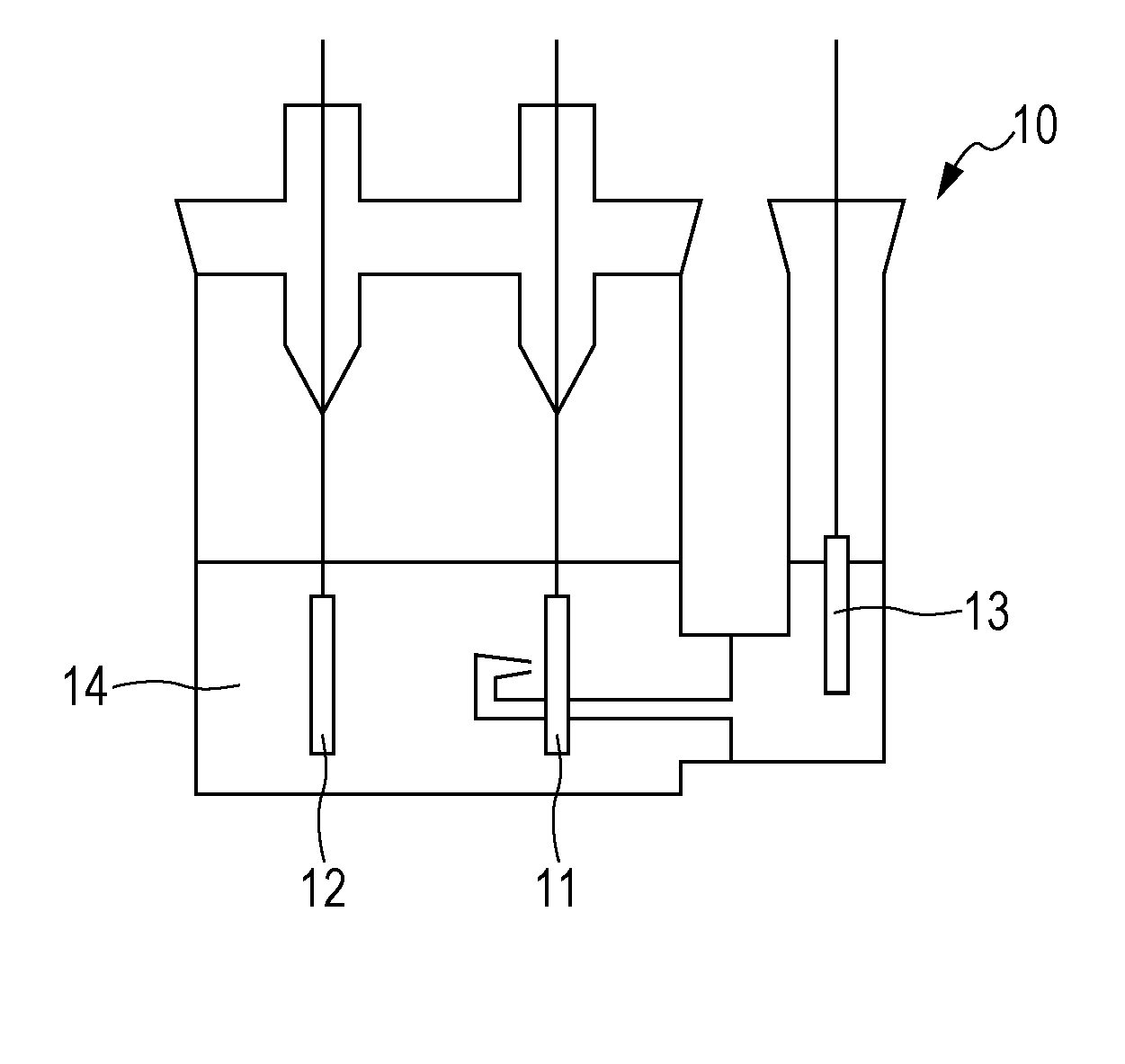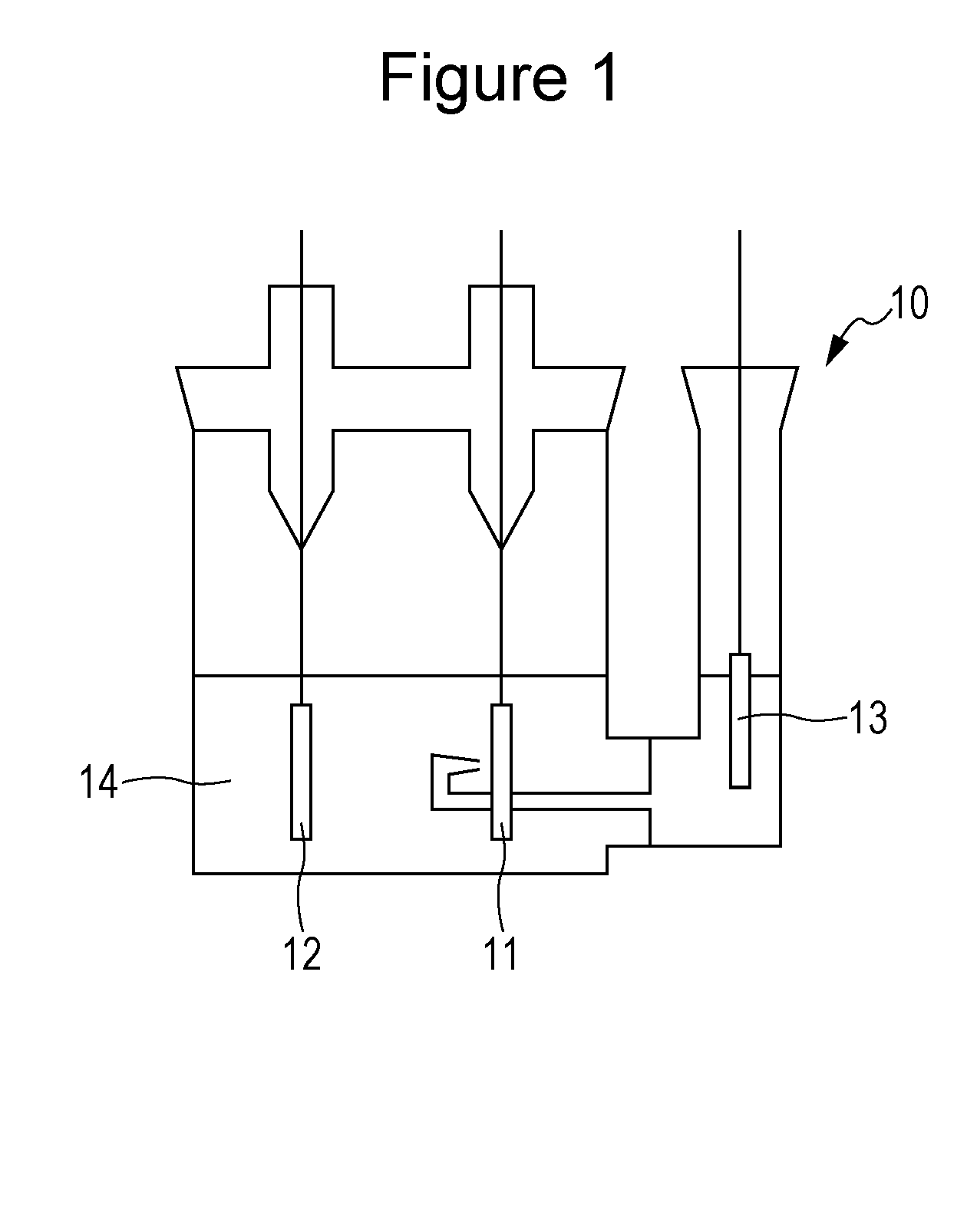Nonaqueous electrolyte secondary battery
a secondary battery and nonaqueous electrolyte technology, applied in the direction of positive electrodes, cell components, transportation and packaging, etc., can solve the problems of poor output characteristics of existing nonaqueous electrolyte secondary batteries, increasing power consumption, and increasing the size of mobile devices, so as to achieve excellent advantageous effects and improve output characteristics
- Summary
- Abstract
- Description
- Claims
- Application Information
AI Technical Summary
Benefits of technology
Problems solved by technology
Method used
Image
Examples
example 1
[0044]First, Li2Co3 and Ni0.5Co0.2Mn0.3(OH)2 produced by a coprecipitation method were mixed at a predetermined ratio and were fired in the air at 900° C. for 10 hours to form lithium transition metal oxide particles of Li1.07Ni0.46Co0.19Mn0.28O2 having a layer structure. The lithium transition metal oxide particles thus formed had a volume-average primary particle size of approximately 1 μm and a volume-average secondary particle size of approximately 8 μm.
[0045]The lithium transition metal oxide particles of Li1.07Ni0.46Co0.19Mn0.28O2 and tungsten trioxide (WO3) having an average particle size of 150 nm were then mixed at a predetermined ratio to yield a positive-electrode active material containing WO3 attached to part of the surface of the lithium transition metal oxide particles. The WO3 content of the positive-electrode active material thus produced was 1.0 mol %.
[0046]The positive-electrode active material, vapor-grown carbon fibers (VGCF) serving as an electrically conductiv...
example 2
[0049]A test cell was assembled in the same manner as in Example 1 except that tungsten trioxide was substituted by tungsten dioxide (WO2) and the positive-electrode active material contained WO2 attached to part of the surface of the lithium transition metal oxide particles. The WO2 content of the positive-electrode active material thus produced was 1.0 mol %.
[0050]The test cell thus assembled is hereinafter referred to as a cell A2.
example 3
[0051]A test cell was assembled in the same manner as in Example 1 except that tungsten trioxide was substituted by lithium tungstate (Li2WO4) and the positive-electrode active material contained Li2WO4 attached to part of the surface of the lithium transition metal oxide particles. The Li2WO4 content of the positive-electrode active material thus produced was 1.0 mol %.
[0052]The test cell thus assembled is hereinafter referred to as a cell A3.
PUM
 Login to View More
Login to View More Abstract
Description
Claims
Application Information
 Login to View More
Login to View More - R&D
- Intellectual Property
- Life Sciences
- Materials
- Tech Scout
- Unparalleled Data Quality
- Higher Quality Content
- 60% Fewer Hallucinations
Browse by: Latest US Patents, China's latest patents, Technical Efficacy Thesaurus, Application Domain, Technology Topic, Popular Technical Reports.
© 2025 PatSnap. All rights reserved.Legal|Privacy policy|Modern Slavery Act Transparency Statement|Sitemap|About US| Contact US: help@patsnap.com


